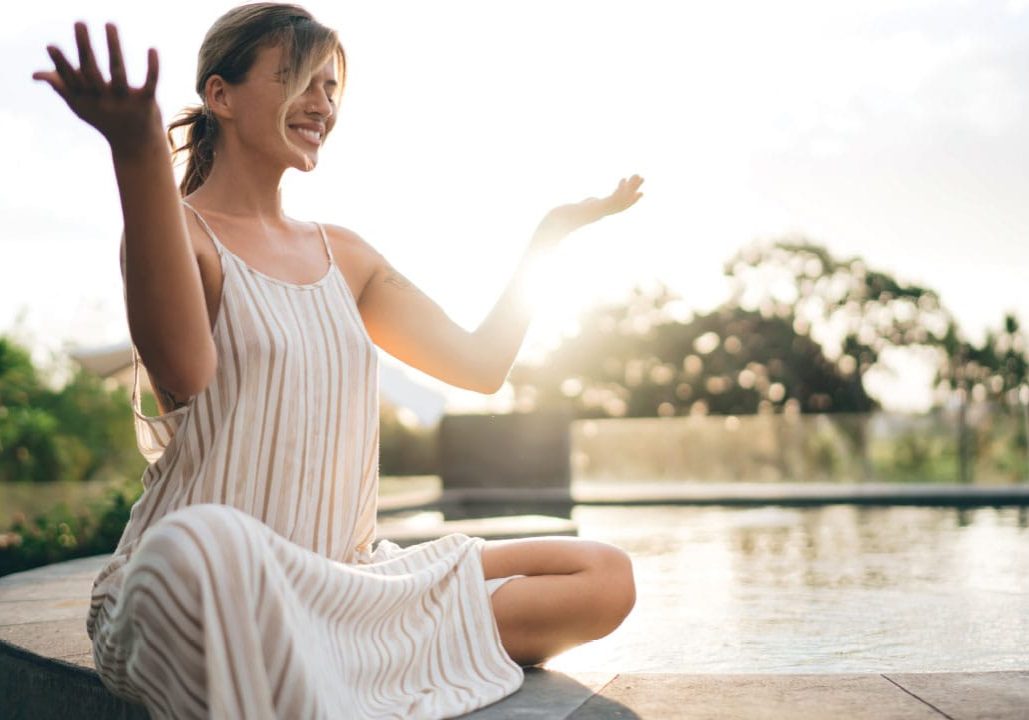
The Wellbeing Dilemma
We recognise the importance of our wellbeing more than ever, especially after the pandemic…so why has it become so elusive?
Reading time: 4 minutes
People are increasingly prioritising their wellbeing it seems — but it’s just not improving. That’s the so-called ‘wellbeing dilemma’ that’s been identified by yoga fashion giant lululemon in its third annual global wellbeing report. It reveals that the worldwide state of wellbeing has not improved since the company first conducted its survey in 2021, during the height of the covid-19 crisis
In fact, troublingly, one in three respondents to this year’s survey said their wellbeing is lower than it has ever been before. Even one in four of those with high wellbeing still rate their overall wellbeing lower than ever.
Although more than 67% of people ranked their wellbeing now as a top priority, only 12% said they thought theirs was where it should be.
This ‘wellbeing dilemma’ is the result of a troubling paradox, it would seem: the prioritisation of wellbeing is not resulting in an improvement in wellbeing.
“Insights such as these help us to have a real conversation around the state of wellbeing so that we can better understand how to support people and communities in their efforts to be well,” said Susan Gelinas, chief people and culture officer at lululemon. “Advancing wellbeing is not a solitary effort, it is a collective undertaking that requires commitment and compassion as we build a path towards positive change.”
The lululemon report provides a glimpse into the world’s state of holistic wellbeing, across physical, mental and social elements, providing visibility into the barriers and challenges to wellbeing and identification of actionable solutions. It includes input from 14,000 respondents worldwide, including the UK, and in other markets where lululemon operates commercially.
Why is this happening?
So, what is going on? While many pandemic-era challenges are behind us, there has not been a corresponding post[1]pandemic morale boost, with 41% now reporting that they feel hopeless when they think about the state of the world.
Barriers — such as taboo, lack of time, financial insecurity and lack of access to physical exercise spaces — also limit people from prioritising their wellbeing. Indeed, more than half are deprioritising their wellbeing due to cost. Some 56% of responders are worried how they will afford their current lifestyle as the cost of living rises, a problem so many others will be able to relate to.
In fact, multiple barriers to wellbeing feel harder to overcome and social pressures make wellbeing feel harder to achieve:
- 30% don’t have the time to think about their wellbeing
- 51% are deprioritising their wellbeing due to cost concerns
- 39% feel the pressure to conform to societal norms negatively impacts their mental wellbeing
For the purposes of the report, the definition of ‘wellbeing’ is broadly split into three categories: physical, mental and social wellbeing. It seems lots of people are struggling across all three core areas.
Geographically, wellbeing activity is surging the highest in Asia — notably China, Thailand, Singapore and South Korea, though Japan is an exception — and the lowest across much of western Europe.
“Far too many people — one in three — feel their wellbeing is lower than ever before,” said Daniel H. Gillison, Jr., chief executive of the National Alliance on Mental Illness (NAMI) and lululemon mental wellbeing global advisory board member.
“That's why NAMI is proud to work with lululemon and lead the conversation to help anyone who is struggling reach compassionate, equitable support and resources.”
What can be done about it?
So, if most people realise that wellbeing is a top priority, yet it feels further out of reach than ever before, what is to be done about it?
Efforts to improve wellbeing mentally, physically and socially are surging globally compared to pre-pandemic levels, it seems.
There are some subtle shifts taking place as well.
According to the lululemon report, we are seeing the rise of a more holistic wellbeing journey — one that emphasises vulnerability, setting boundaries, and listening to yourself.
There is a renewed effort to find joy in movement, which could spell good news for the future of the yoga community and its teachers in regions where wellbeing is under threat.
Most people agree that when they move their body, their mental wellbeing improves and want to feel unconstrained and free when they choose to be physically active. Some 57% feel rather than have a specific workout routine, people prefer to move their body in a way that feels good at the time. To find this joy, people are experimenting with where and how they move their bodies — that includes working out with others more and exercising in new ways.
The report itself uncovers steps everyone can take to improve their wellbeing, learning from those with higher levels of wellbeing:
- Work out / exercise with other people when possible. Half of those with high wellbeing are working out with other people more now than pre-pandemic (versus only a quarter of those with low wellbeing)
- Prioritise spending time with your loved ones. Some 41% of those with high wellbeing are prioritising spending time with loved ones more now than pre[1]pandemic (versus only 29% of those with low wellbeing)
- Work to express all your emotions, not just the positive. More than half of those with high wellbeing are actively trying to make sure they can express their full range of emotions, not just ones linked to happiness (versus only 4 in 10 of those with low wellbeing)




